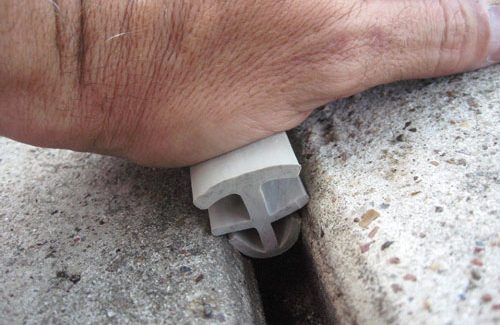When concrete is poured, the proper placement of each concrete expansion joint is critical. The expansion joints allow the concrete to expand and contract when the temperature and humidity levels change. The difference between overnight low and daytime high temperatures can be 50 degrees in many locations. This results in a rapid expansion and cooling of the concrete twice every day. Over time, the concrete can crack if it does not have room to expand when the temperature increases.
Expansion joints are the deliberate placement of materials that allow the concrete to move without damage. The joints are only about an inch wide, and they do not interfere with the quality of the surface. They do promote an extended lifespan and enhanced durability of the concrete. This is because concrete is less likely to crack or settle when there is an expansion joint in place.
A concrete expansion joint is necessary for most types of concrete structures. When a concrete foundation is poured for a house, expansion joints are placed so that freeze and thaw cycles do not shift, crack or unsettle the concrete. When concrete is poured over a horizontal area, expansion joints are also necessary. They ensure that a freeze cycle does not cause an upheaval of the concrete. The expansion joints allow concrete to expand in all directions.
Another important function of the concrete expansion joint is to allow water to drain away from the section of concrete. On a flat section of sidewalk or driveway, the water will pool in low areas or just sit on the surface. It seeps into the concrete, where it erodes the mortar. It can also expand if the air temperature drops below freezing. This causes cracking. Expansion joints provide a place for the water to flow without damaging the concrete.
To learn more about concrete expansion joint, visit Trim-A-Slab.com


